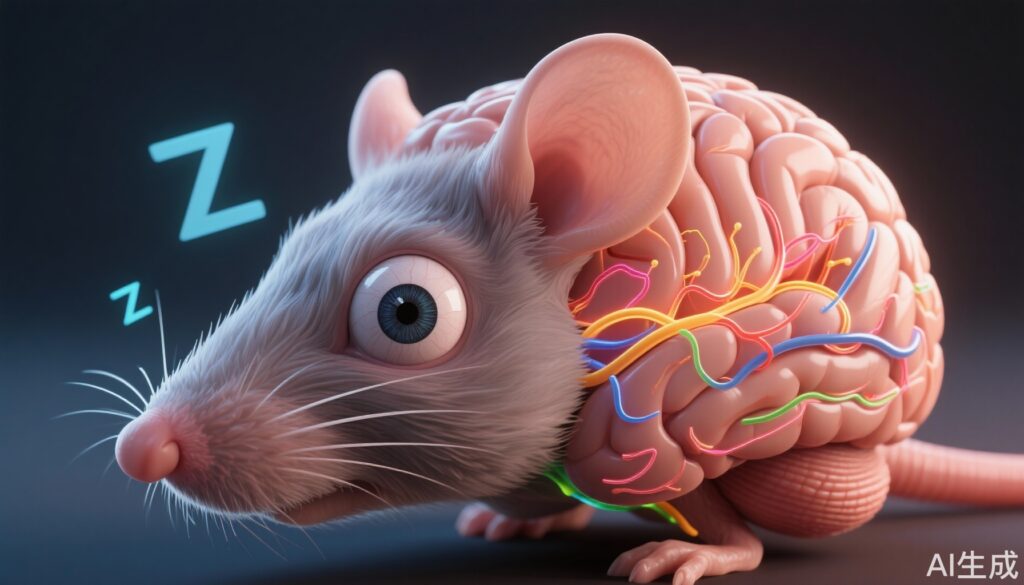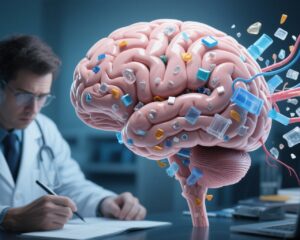Introduction
Memory is fundamental to human experience, shaping our identity, guiding our decisions, and allowing us to learn from the past. Yet, scientists have long wrestled with a fundamental question: how does the brain acquire new memories without overwriting or distorting previously stored ones? This challenge, known as “catastrophic forgetting,” refers to the phenomenon where the introduction of new information can cause older memories to be lost or corrupted. A recent groundbreaking study has provided novel insights into the brain’s strategy for preserving memories through the distinct roles of different sleep phases.
Catastrophic Forgetting: A Memory Conundrum
In neuroscience and artificial intelligence alike, catastrophic forgetting presents a major hurdle. When new experiences and memories are encoded, they can potentially interfere with or overwrite the neural representations of past memories. This interference would be detrimental to an organism’s ability to learn continuously and adapt to its environment. Understanding how biological brains avoid this fate can inform not only neuroscience but also the development of more resilient artificial learning systems.
Scientific Breakthrough: Memory Processing in Sleep Stages
Published in January 2025 in the journal Nature, a research team led by neuroscientists trained genetically modified mice in a memory task and studied how their brains processed memories during sleep. Prior studies established that during sleep, especially in deep or non-REM stages, the brain “replays” recent experiences by activating the same neurons involved in those experiences in a similar sequence. This replay is thought to consolidate memories, transferring them from short-term to long-term storage.
Building on this, the research group capitalized on a unique feature of mice: their eyes partially open during some sleep stages. By continuously monitoring one eye’s pupil size, they identified cyclic changes during deep sleep — switching roughly every minute between a constricted (small) and an enlarged (large) pupil state. Intriguingly, neuronal activity recordings showed that the replay of recent experiences predominantly occurred during the small pupil phase.
To test whether these distinct pupil-size phases corresponded to different memory processing operations, the scientists employed optogenetics — a cutting-edge technique allowing them to precisely control genetically modified neurons using light. They trained mice to find a sweet treat hidden on a platform and then selectively reduced the activity of the neurons involved in replay during either the small or large pupil phases immediately after training.
Findings: Small Pupil Phase Consolidates New Memories
When neuronal replay during the small-pupil phase was suppressed, the mice completely forgot the reward’s location upon waking, suggesting that this phase is critical for integrating newly acquired memories. Co-author Dr. Wenbo Tang from Cornell University described this as “erasing their memory.”
Conversely, suppressing neuronal activity during the large-pupil phase did not impair memory for the newly learned reward location. The mice navigated directly to the treat, demonstrating that this sleep phase is not essential for consolidating fresh memories.
Large Pupil Phase Preserves Older Memories
Further experiments indicated the large-pupil phase processes older, well-established memories formed days prior, rather than memories acquired on the day of sleep. As Azahara Oliva, a physicist at Cornell University and another co-author, summarized, “In the large pupil substate, the brain preserves earlier memories, whereas in the small pupil substate, it integrates new memories.”
This dual-phase system offers a plausible biological mechanism to prevent new memory integration from damaging older stored knowledge — an elegant solution to catastrophic forgetting.
Expert Insights and Evolutionary Significance
György Buzsáki, a prominent systems neuroscientist at New York University who was not involved in the study but has mentored members of the research team, expressed strong confidence that this mechanism extends beyond mice, likely existing in humans too. He emphasized memory as an evolutionarily ancient system, suggesting that segregating memory processing over sleep phases is a conserved strategy.
Maksim Bazhenov of the University of California, San Diego, highlighted the study’s significance in demonstrating that the brain temporally separates processing of new and existing memories to avoid interference and confusion.
Implications for Artificial Intelligence
Catastrophic forgetting is not confined to biological brains; it also plagues artificial neural networks that underpin many modern AI systems. These algorithms struggle to learn new tasks without losing information from prior training. Understanding how the brain elegantly sidesteps this issue can inspire innovative AI algorithms that maintain learned knowledge while integrating new data more efficiently.
Case Vignette: Sarah’s Learning Challenge
Consider Sarah, a medical student who struggles to memorize vast amounts of new information without forgetting earlier material. Insights from this research underline the importance of sleep in preserving her prior knowledge while assimilating new concepts. Encouraging Sarah to maintain consistent, quality sleep could support her brain’s natural dual-phase memory processing, minimizing interference between old and new memories.
Conclusion
This study illuminates a fundamental memory mechanism: the segregation of new and old memory processing into distinct sleep phases. By showing that mice process recently acquired memories during the small-pupil sleep phase and older memories during the large-pupil phase, neuroscientists have identified how the brain naturally avoids catastrophic forgetting. This discovery enhances our understanding of memory consolidation and sleep’s vital role and paves the way for advancements in addressing memory disorders and improving AI learning algorithms.
References
Watson T. Why don’t new memories overwrite old ones? Sleep science holds clues. Nature. 2025 Jan;637(8046):524-525. doi:10.1038/d41586-024-04232-1. PMID: 39762380.



